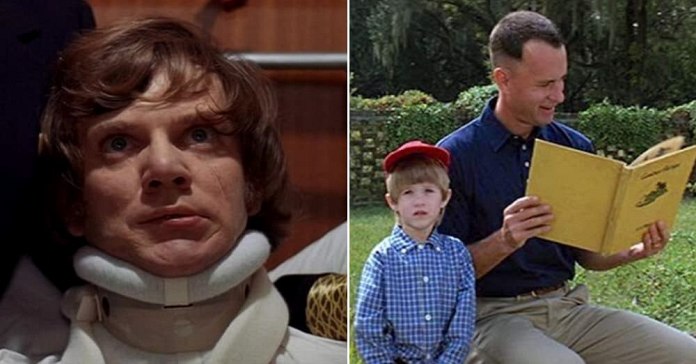
Every year, Hollywood dives into the world of literature, seeking inspiration to transform books into blockbuster movies. And it’s no surprise that when these movies dare to reshape the ending, they ignite passionate debates. Some die-hard fans, who cherish the sacred original work, eagerly anticipate the representation of their favorite hidden gems on the silver screen. Meanwhile, critics discuss whether toning down the darker aspects from the source material is a clever choice.
It’s actually quite an adventure when movies decide to deviate or completely ignore the original book’s ending. The reasons behind these changes are as diverse as the stories themselves. For instance, if the book concludes with tragedy, the filmmaker or studio might opt for a more hopeful or moderately happy ending for the movie adaptation. In some cases, the filmmaker may even tweak the overall vibe of the story, just like Stanley Kubrick did with his adaptation of “Dr. Strangelove.” As a result, modifying the ending becomes a necessary voyage to maintain consistency with the rest of the film.
Here, we present a thrilling list of movies based on books that boldly set sail away from their original endings. We invite you to embark on this journey and consider which of these movies ventured farthest from their literary counterparts.
1. The Hunchback of Notre Dame

In Victor Hugo’s famous novel, the ending is undeniably bleak. Esmeralda, the main character, is falsely accused of attempted murder and sentenced to hang. Despite the hunchback Quasimodo’s valiant efforts to save her by providing sanctuary in the cathedral, the Archdeacon Frollo betrays her to the king’s guards after she rejects his advances. Tragically, Esmeralda meets her demise at the gallows, and in a fit of rage, Quasimodo pushes Frollo off the cathedral’s rooftop. In the original ending, Quasimodo mysteriously disappears, only for his decaying body to be found locked in an embrace with Esmeralda’s corpse in a mass grave.
However, the movie adaptation takes a slightly different approach. While the animated version by Disney delves into darker themes such as lust, sin, and the discrimination faced by the Romani people, it also alters the original ending significantly. Instead of facing a wrongful accusation and an untimely death, Esmeralda falls in love with and marries Phoebus. Additionally, Frollo’s demise is accidental rather than deliberate, as he falls from the cathedral. Perhaps the most significant departure from the novel is that Quasimodo is not rejected by society and vanishes into obscurity. Instead, he is hailed as a hero and embraced by the community.
2. The Little Mermaid

In Hans Christian Andersen’s well-known story, the ending takes a rather bleak turn for a fairy tale. Ariel, the protagonist, doesn’t end up with her prince as he chooses to marry someone else. Moreover, her transformation from a mermaid to a human brings her constant agonizing pain, and she never regains her voice. In a tragic twist, Ariel eventually dies of a broken heart after rejecting the opportunity to become a mermaid again by sacrificing the prince’s life. However, there is a glimmer of hope in the story. Ariel becomes an airborne spirit with the chance to earn an immortal soul and enter heaven if she commits good deeds for humanity for the next three centuries. While this added ending has sparked debates, Andersen himself believed that it provided a more fulfilling resolution than simply having the little mermaid perish.
Contrastingly, the 1989 Disney film adaptation, along with its subsequent 2023 live-action remake, ensures a happier conclusion for our beloved little mermaid. After Ariel is transformed back into a mermaid and enslaved by the villainous Ursula, she and Prince Eric manage to defeat the evil sea witch once and for all. The movie culminates with Ariel’s father, King Triton, giving his blessing for the young couple to marry and permanently transforming Ariel into a human. This alternative ending leaves viewers with a sense of joy and satisfaction.
3. Forrest Gump

In Winston Groom’s novel, “Forrest Gump,” the story follows Forrest as he embarks on various adventures, including his time as a college athlete, serving in Vietnam, and starting a shrimp business named after his late friend Bubba. However, towards the end of the story, Forrest becomes frustrated with the complexity of his life. Consequently, he decides to give away his business and ends up living on the streets alongside a legless Vietnam veteran and an orangutan named Sue. Unlike the film version, the novel portrays Forrest as more of a “savant” and does not depict him having a child with Jenny.
On the other hand, the film adaptation of “Forrest Gump” takes a different approach to its ending. Rather than ending with Forrest on the streets, the movie reunites him with Jenny, who is now raising their son. Their son was conceived during a one-night stand a few years prior. Forrest and Jenny eventually get married, but their happiness is short-lived as Jenny succumbs to AIDS. The film concludes with Forrest as a single father, sending his son off to his first day of school.
Overall, the novel and the movie have distinct endings, with the novel presenting a more somber and unconventional conclusion, while the film offers a bittersweet and hopeful ending for Forrest and his son.
4. The Natural
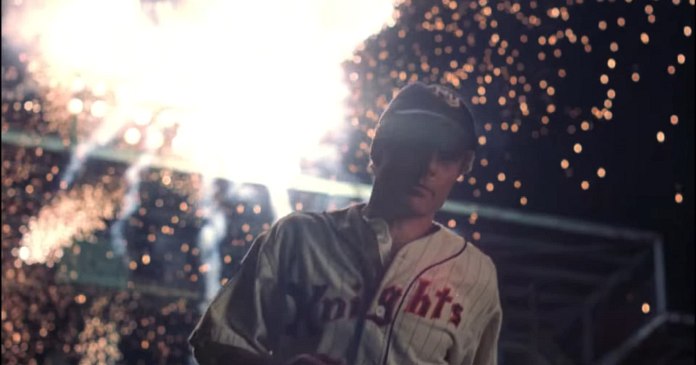
In Bernard Malamud’s 1952 novel, the story revolves around Roy Hobbs, a former baseball prodigy who remarkably makes it to the major leagues at the age of 35, even after his career was derailed by a gunshot from a woman who targeted top players. With this second chance in his mid-30s, Hobbs quickly achieves success. However, the book concludes with a twist as Hobbs accepts a tempting offer of $35,000 to intentionally lose the final game of the season. His decision takes an unexpected turn when he discovers that he is going to be a father. Determined to do right by his child, he tries his best to contribute to the team but disappointingly strikes out during his final at-bat, resulting in the team losing the pennant. Adding to the uncertainty, Hobbs faces the ominous possibility of a lifetime ban from baseball after a reporter discovers the secret payout, leaving the ending with a dark and ambiguous tone.
The novel’s adaptation into a film, starring Robert Redford, largely preserves the core narrative of Hobbs’s career being cut short only to be revived in his 30s. However, the movie significantly alters the ending compared to the book. Instead of Iris, a new love interest and expectant mother, the film portrays her as Hobbs’s former girlfriend who had given birth to his son years earlier. Additionally, Hobbs refuses any bribes to throw the final game. Instead, he emerges as a hero in the film. Just recovering from being poisoned, Hobbs smashes a home run in the ninth inning, leading his team to victory and securing the pennant. Thus, in the movie, Hobbs becomes an iconic hero, while in the novel, he grapples with failure and the looming possibility of a lifetime ban from baseball.
5. I Am Legend
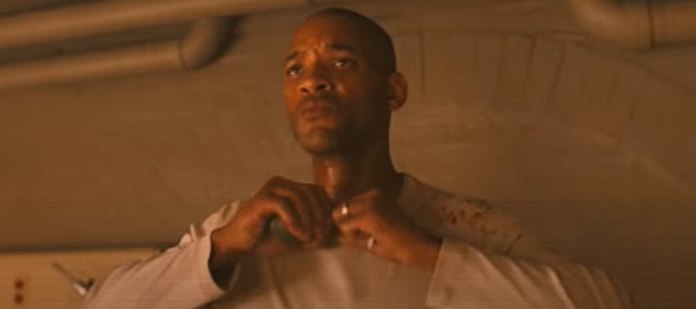
Richard Matheson’s 1954 novel revolves around Robert Neville, a man who finds himself as the lone survivor in a world devastated by a global pandemic. The pandemic has either claimed lives or transformed people into bloodthirsty vampires. Neville’s tale revolves around his desperate attempts to protect himself by eradicating the infected. Along the way, he discovers that some vampires are “undead,” while others have conquered the plague and are striving to establish a new society. Unfortunately, these surviving humans despise Neville, viewing him as a merciless slayer. The novel concludes with Neville tragically taking his own life after being captured and shot by members of this emerging society. Neville’s demise cements his legendary status within the vampire community, much like vampires had long been legends to humans.
One of the notable film adaptations of Matheson’s novel is the 2007 movie titled I Am Legend, featuring Will Smith in the lead role as Neville. In this rendition, Neville embarks on a quest to develop a cure for the pandemic. He manages to capture a Darkseeker, a vampire-like creature, to test his potential remedy. However, tragedy strikes when Neville is forced to euthanize his beloved dog after she becomes infected. Filled with grief and anger, Neville intentionally attracts a group of Darkseekers, only to be saved by a woman named Anna and her immune son. Together, they seek refuge in Neville’s home, where he discovers that his cure has successfully worked on the captured Darkseeker. The movie concludes with Neville entrusting Anna with a vial containing the cured woman’s blood. He then sacrifices himself, along with a group of Darkseekers, by detonating explosives in the building. Anna and her son carry the vial of the cure to a survivor’s camp, ensuring Neville’s sacrifice is not in vain as they share his legacy with the remaining survivors.
6. The Scarlet Letter
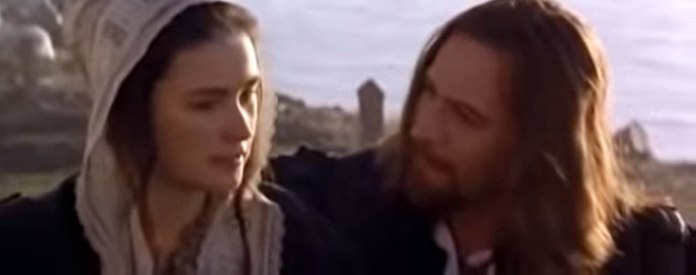
How The Book Ends: In Nathaniel Hawthorne’s classic novel, The Scarlet Letter, set in Puritan New England in the 1640s, Hester Prynne faces public shame and scorn for committing adultery and refusing to reveal the father of her child. Unfortunately, the story does not have a happy ending. After years of Hester’s husband being missing, he returns and seeks revenge by attempting to uncover the identity of her lover. Surprisingly, the lover turns out to be the local minister, Arthur Dimmesdale. Dimmesdale, plagued by guilt and failing health, suffers from his own cowardice in not admitting that he fathered Hester’s child. Hester and Dimmesdale plan to escape to England together, but their plans are shattered when Dimmesdale dies in Hester’s arms after publicly confessing his love for her. Shortly after, Hester’s husband also passes away. Hester eventually leaves the community with her daughter but later returns and continues to wear the scarlet letter until her own death. She is buried next to Dimmesdale.
How The Movie Ends: The Scarlet Letter has been adapted into several films, including a 1995 version directed by Roland Joffe and starring Demi Moore and Gary Oldman. Joffe’s adaptation takes some liberties with the original story, adding a significant subplot involving tensions between the Puritan community and the local Algonquin tribe, which is not present in Hawthorne’s novel. In the film, Hester’s estranged husband mistakenly kills a man whom he believes to be her lover and scalps him. Realizing that his actions have led to the Puritan colony declaring war on the tribe, he takes his own life. The movie concludes with the Algonquins overtaking the community just as Dimmesdale publicly confesses to being the father of Hester’s child. Hester, Dimmesdale, and their daughter survive the violent conflict, and they decide to leave the colony in search of a fresh start in the Carolinas.
7. Dr. Strangelove or: How I Learned to Stop Worrying and Love the Bomb
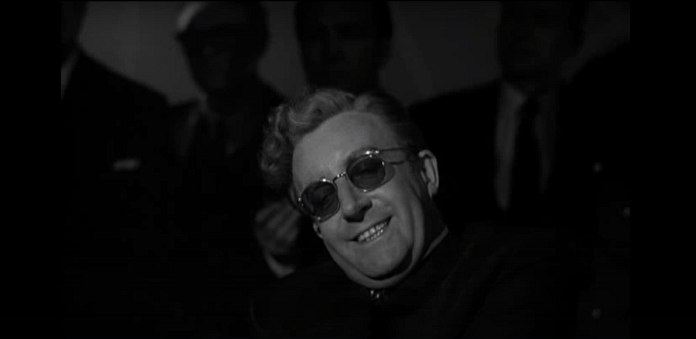
How The Book Ends:
The film is based on Peter George’s novel, Red Alert, which is a serious thriller focusing on the US and Soviet governments working together to prevent a nuclear strike. A deranged Army general plans to launch the strike on the Soviet Union. In the climax of the story, almost all of the bombers are safely recalled before reaching their targets. However, one bomber manages to reach its target, but its payload fails to detonate correctly, thus preventing the destruction of its target. This failure ultimately prevents a nuclear war between the United States and the Soviet Union from breaking out.
How The Movie Ends:
In his film adaptation of Dr. Strangelove, filmmaker Stanley Kubrick not only deviates from the ending in the source material, but also changes the tone of the entire story. Instead of a serious thriller, Kubrick transforms it into a black comedy centered around the Cold War. He introduces the character of Dr. Strangelove, who was not present in the original novel. While the book concludes with the bomb malfunction averting nuclear catastrophe at the last moment, Kubrick’s film concludes with a dramatic scene of a massive mushroom cloud. The remaining bomber successfully drops its nuclear payload on its target, while government officials argue fruitlessly about Dr. Strangelove’s survival plan.
8. A Clockwork Orange

In Anthony Burgess’s novel, the twisted teenager Alex finds himself behind bars for the havoc he wreaked. Towards the end of the book, he undergoes a form of treatment called aversion therapy in hopes of being rid of his destructive tendencies. Surprisingly, even though Alex doesn’t feel disgusted by his past actions upon his release, he willingly chooses to live as a law-abiding citizen. He believes that engaging in mayhem would be nothing more than a pointless waste of time. This conclusion emphasizes the theme of free will that runs throughout the book.
Stanley Kubrick’s film adaptation of the novel follows a different path. Based on the American version of Burgess’s work, the movie excludes the final chapter, which portrays a reformed Alex rejecting his former lifestyle. Although Kubrick was aware of the existence of this chapter, he opted for a different approach in the film. In the movie’s ending, Alex appears to be cured of his compulsions but continues to exhibit psychotic behavior. Burgess was not impressed with the film, as he felt it glorified the characters’ abhorrent actions and led readers of the novel to misunderstand the true essence of the story.
9. Planet of the Apes

How The Book Ends:
Published in 1963, French author Pierre Boulle’s science fiction novel La Planète des singes (US title Planet of the Apes) takes us on a journey with Jinn and Phyllis. They stumble upon a manuscript written by journalist Ulysse Mérou, recounting his fascinating experiences on a planet governed by intelligent apes. Soon after his arrival, Mérou is captured and forced into a relationship with Nova, resulting in the birth of their child. The novel concludes with the couple managing to escape the planet and return to Earth, only to discover that 700 years have passed since Mérou’s initial departure. Earth is now under the rule of apes. The framing story reveals an unexpected twist: Jinn and Phyllis, the main characters, are actually civilized chimpanzees. They discard Mérou’s manuscript, skeptical of the notion that humans can possess intelligence.
How The Movie Ends:
In the 1968 film adaptation of Boulle’s novel, the protagonist is not a journalist, but an astronaut named George Taylor. His spacecraft lands on a planet controlled by apes. As Taylor narrowly avoids the threat of lobotomy and castration, he assists two chimpanzee scientists in identifying the remnants of an advanced human civilization from the past. Determined to uncover the truth, Taylor presses on, despite warnings from Dr. Zaius that he might not like what he discovers. Eventually, the apes permit Taylor and Nova to depart, leading to a climactic ending where they stumble upon the remains of the Statue of Liberty, realizing that they had been on a post-apocalyptic Earth all along.
10. Breakfast at Tiffany’s

In Truman Capote’s novella, the conclusion portrays a somewhat melancholic ending for Holly Golightly. She loses her beloved cat and departs from New York to Argentina, though it remains uncertain if she will remain there for long. This ending dwells on the possibility of never attaining true happiness in life.
Capote expressed his dissatisfaction with the film adaptation of his novella, as Paramount Pictures did not fulfill their promises made when acquiring the rights to the story. The movie takes several liberties with the plot, notably introducing a romantic relationship between the unnamed writer/narrator and Holly, which is absent in the original novella. In the film, they end up together after he chastises her for her perceived cowardice. Furthermore, while Holly loses her cat in the book, the film alters this aspect. Although she initially throws the feline out of the cab, the ending shows her returning to retrieve it before passionately kissing her neighbor.